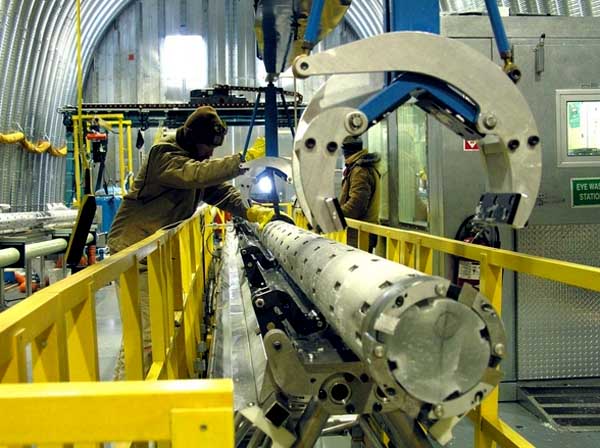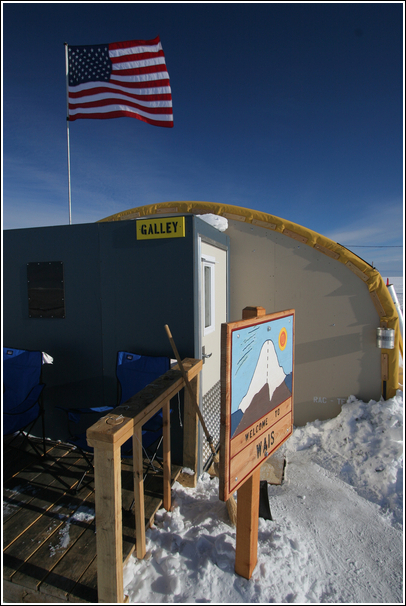|
Deep into WAIS DivideProject continues major effort to recover high-resolution climate record of last 100,000 yearsPosted October 31, 2008
Antarctica isn’t known for its stellar weather. The vast continent boasts relentless, scouring winds that blow from the plains to the coast and wintertime temperatures below minus 70 degrees Celsius. Although largely a polar desert, some spots receive relatively heavy snowfall. If you’re a scientist who wants to study the past 100,000 years of climate in unprecedented detail, you head to one of these areas of high accumulation, where an ice core drilled through the 3½-kilometer-thick ice sheet will reveal fat layers of climatic history. That’s the impetus behind the West Antarctic Ice Sheet Divide Ice Core (WAIS Divide) program “The site was selected because it is the best place in the world to get a high-time resolution record of greenhouse gases that extends back about 40,000 years. It also is the best place in Antarctica to get a climate record to compare to the climate record from the Greenland ice cores,” explained Ken Taylor, WAIS Divide chief scientist with the Desert Research Institute “We wanted to get that high-time resolution so we could compare it to the Greenland ice cores,” he added. “We also wanted a high-time resolution so that we could understand the influence that changes in greenhouse gases have on changing the climate.” Ice cores contain a wealth of information about regional and global climate, from the bubbles of gas trapped in the ice to microscopic particles of dust and perhaps even bits of biological material. From ice cores, scientists have been able to draw a correlation between carbon dioxide and other greenhouse gas concentrations in the atmosphere with the rise and fall of temperature. Other ice cores go further back in time, such as the European Project for Ice Coring in Antarctica (EPICA) The WAIS core focuses tightly on a smaller picture. “You can’t see as much of it, but what you can see you can see in greater detail,” he explained. In addition, ice cores previously extracted in Greenland, with similar resolution and time scales, cannot be used to study atmospheric CO2 because of the large amount of dust in Greenland ice. The dust essentially corrupts the CO2 record through a chemical reaction that inflates the levels of carbon dioxide. Nevertheless, the scientists can learn much about climatic influence between the hemispheres by comparing the cores. “It’s going to tell us where major climate changes originate,” Taylor said. In the last 100,000 years — even the past 800,000 years — levels of carbon dioxide haven’t been as high as today, when scientists have measured about 390 parts per million. That means there’s not a recent snapshot of the past that will mirror the future. Instead, the core may help to answer a chicken-and-egg question: Does CO2 rise or fall and then climate changes or vice versa? “We’re not able to use an ice core to point to an analogue for the year 2100 A.D. That would be nice,” agreed Ed Brook “Instead, what we’ll see are lots of variations in atmospheric CO2, albeit at lower levels than today, and those are linked pretty closely to the kinds of climate changes that we can also infer from the ice core record,” he said. “Our major goal is to understand how the factors that control atmospheric carbon dioxide naturally are related to changes in climate.” In other words, by better understanding how the connection between greenhouse gases and climate work, researchers will be able to model or predict changes in the future as CO2, methane and other pollutants enter the atmosphere. “The measurements that really excite me the most are the measurements of the greenhouse gases,” Taylor said. |



For USAP Participants |
For The Public |
For Researchers and EducatorsContact UsU.S. National Science FoundationOffice of Polar Programs Geosciences Directorate 2415 Eisenhower Avenue, Suite W7100 Alexandria, VA 22314 Sign up for the NSF Office of Polar Programs newsletter and events. Feedback Form |



